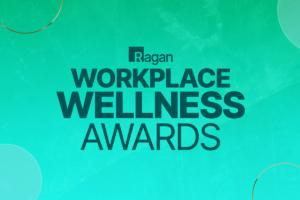Wellness Roundup: Improving employee experience, mental health ‘ghost networks’ and more
A snapshot of research, news and data covering human resources, benefits and employee wellbeing.

Organizations put a priority on employee experience upgrades in 2023
With employees taking time during the pandemic to figure out what is truly important to their own wellbeing, organizations are ready to set their sights on HR technology for greater personalization of the employee experience, according to Insurance CIO Outlook. In fact, 78% of employers surveyed were ready to use digital HR tech to improve the employee experience. HR technology also promises to identify trends in development, leadership and culture that will drive further strategic changes.
Agnes Misiurny, consulting director at UST, said that some business leaders still mistake yoga classes and a stocked breakroom as part of employee experience—but they’re not but they’re not:
“Those are perks, while employee experience is all about what happens at work — from the interactions with fellow staffers through to the tech they use, as well as the overall environment and workplace culture. Doubling down on EX makes good sense from both a people perspective and a financial one.”
[RELATED: Join us Aug. 14-16 in Denver for our Employee Experience & Wellness Conference]
Gartner predicts that infrastructure and operations leaders will be under pressure in 2023 to become more efficient while retaining talent and improving the digital employee experience. Its report says that an upgraded digital employee experience gives organizations “Near-real-time processing of data aggregated from endpoints, applications and employee sentiment, along with information on organizational context, help surface actionable insights that drive self-healing automations and engage employees, moving them toward optimal behaviors.”
Why this matters: Misiurny cites an Oxford University study that found happy workers are 13% more productive, while Gallup discovered companies with a highly engaged workforce are 21% more profitable.
According to Insurance CIO Outlook, organizations that are meeting the needs of new employee experiences will be “more successful in creating a high-performance culture, aligning values and vision and developing new leadership capabilities.” They go on to say this spotlights the importance of real commitment to personalization for success.
The workplace may be impacting employees’ sleep
A recent report published in the journal JAMA Network Open examined whether clustering of and changes in workplace psychosocial resources — the tools, practices, and support systems that organizations provide to promote employees’ wellbeing and foster a positive work environment — are associated with sleep disturbances among workers.
Because sleep is essential to physiological rest and recovery, prolonged impaired sleep may have far-reaching effects on the body. Since people spend significant time in the workplace, researchers sought to investigate the potential of preventing sleep disturbances through a positive psychosocial work environment.
The study looked specifically at how leadership and fairness or coworker support and collaboration contributed to sleep patterns. After two years, 53% of participants reported changes in those areas. Of that group, if the changes were positive, persistent sleep problems were more likely to decline. If the changes were negative, sleep problems increased.
Why this matters: Organizations should take time to understand how leadership and culture affect the health and productivity of their workforce. According to the study, negative changes in leadership and fairness were associated with the largest long-term impact on sleep, over negative changes in coworker relationships or collaboration.
“This finding is plausible, considering the greater power of leaders to affect a positive working environment,” wrote corresponding author of the study Tianwei Xu, a postdoctoral student in epidemiology at Stockholm University in Sweden.
This study continues to make the case for leadership training and creating higher psychologically safe workplaces. When employees can be themselves at work and feel comfortable sharing ideas, anxiety and stress decrease as barriers to greater innovation and productivity.
Insurance companies offering ‘ghost networks’ instead of real mental health help
Earlier this month, medical experts asked congress to hold insurance companies accountable for offering unreliable medical directories, mainly affecting people seeking mental health treatment. These medical directories offer nonexistent or unavailable doctors and providers known as “ghost networks.”
A secret shopper study found these ghost networks in 12 plans across six states, where 80% of mental health providers listed were unreachable, out of network or were not accepting new patients.
“In my view, it’s a breach of contract for insurance companies to sell their plans for thousands of dollars each month, while their product is unusable due to a ghost network,” Senate Finance Committee Chair Ron Wyden said at a hearing on May 3, 2023.
“And in a moment of national crisis about mental health, with the problem growing at such a rapid rate, the widespread existence of ghost networks is unacceptable.”
While the committee didn’t take action, it did discuss the importance of tackling “ghost networks” in reforming mental health regulation. Proposals included standardized directory information formats, annual directory submissions provided to the government by health plans, mandated networks audits and monetary penalties for inaccurate directories.
Why this matters: If insurance providers are going to provide coverage for something, patients should be able to use the benefits they’re paying for. With employers offering insurance benefits, it stands that organizations should make sure they too are able to access the benefits they’re providing to their workforce.
Be sure to ask questions about accessibility around the services provided and what the insurance company’s recourse is should patients have trouble finding treatment. Some providers may offer telehealth alternatives or searchable, up-to-date directories of providers as required for Medicaid plans under the Consolidated Appropriations Act of 2023.







